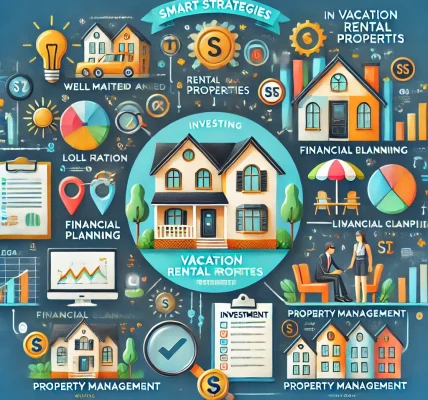Introduction
Investing in foreclosed properties can be a lucrative real estate strategy, offering significant discounts and profit potential. However, it also comes with risks that require careful planning and due diligence. In this guide, we’ll explore the pros and cons of investing in foreclosures, key strategies to minimize risks, and steps to successfully acquire these properties.
Understanding Foreclosures
A foreclosure occurs when a homeowner fails to make mortgage payments, leading the lender to seize and sell the property to recover the unpaid loan balance. Foreclosed properties are often sold at auctions or through bank-owned (REO) sales, presenting unique investment opportunities.
Types of Foreclosed Properties
- Pre-Foreclosure: The homeowner has defaulted but still owns the property. Investors can negotiate directly before it goes to auction.
- Auction Properties: Sold to the highest bidder at foreclosure auctions, often requiring full payment upfront.
- Bank-Owned (REO) Properties: Properties that did not sell at auction and are now owned by the lender.
- Government-Owned Foreclosures: Properties foreclosed by government agencies like HUD or VA, usually sold through special programs.
Rewards of Investing in Foreclosed Properties
✅ Below Market Prices
Foreclosed properties are often sold at a discount, making them attractive for investors looking for instant equity or rental income opportunities.
✅ Profit Potential
By purchasing below market value, investors can flip foreclosed properties for profit or generate rental income with a strong return on investment (ROI).
✅ Diverse Opportunities
Foreclosures exist in all property types—single-family homes, multi-unit buildings, and commercial spaces—offering flexibility for different investment strategies.
✅ Motivated Sellers
Banks and lenders prefer quick sales, giving investors negotiation power to secure better deals.
Risks of Investing in Foreclosures
❌ Property Condition Issues
Many foreclosed homes are in poor condition due to neglect or damage. Renovation costs can add up quickly.
❌ Title and Legal Complications
Some properties may have liens, unpaid taxes, or disputes that complicate ownership transfers.
❌ Competitive Market
Foreclosures attract investors, making competition high, especially for well-located properties.
❌ Uncertain Market Value
Some foreclosed properties may not appreciate as expected, leading to lower-than-anticipated returns.
Strategies for Successful Foreclosure Investments
1. Conduct Thorough Due Diligence
- Research local foreclosure laws and market conditions.
- Check for liens or unpaid property taxes.
- Visit the property (if possible) to assess condition and repair needs.
2. Set a Budget and Stick to It
- Include purchase price, renovation costs, and closing fees in your budget.
- Account for unexpected repairs and holding costs.
3. Choose the Right Purchase Method
- Pre-Foreclosure: Offers room for negotiation.
- Auction: Requires quick decisions and full payment.
- Bank-Owned (REO): Less risk but may involve lengthy negotiations.
4. Secure Financing in Advance
- Cash offers are preferred but not always necessary.
- Hard money loans and rehab loans can finance purchases and renovations.
- Traditional mortgages may be available for bank-owned properties.
5. Work with Professionals
- Real Estate Agents: Specializing in foreclosures can help find the best deals.
- Property Inspectors: Assess the condition before purchase.
- Title Companies or Attorneys: Ensure clear title transfers and legal safety.
6. Develop an Exit Strategy
- Fix & Flip: Renovate and sell for profit.
- Buy & Hold: Rent it out for passive income.
- Wholesale: Assign contracts to other investors for a quick profit.
Steps to Buying a Foreclosed Property
Step 1: Identify Potential Properties
Use foreclosure listing websites, bank listings, or real estate agents to find foreclosed properties in your target area.
Step 2: Research the Market
Analyze comparable sales to determine fair property values and potential ROI.
Step 3: Perform a Title Search
Ensure no hidden liens or encumbrances that could complicate ownership transfer.
Step 4: Secure Financing or Prepare Funds
Get pre-approved for loans or arrange necessary capital before making an offer.
Step 5: Make an Offer or Bid at Auction
If buying an REO or pre-foreclosure, negotiate directly with the seller or bank. For auctions, set a maximum bid and stick to it.
Step 6: Close the Deal and Begin Renovations
After securing the property, renovate strategically to maximize value and rental potential.
Conclusion
Investing in foreclosed properties can be highly rewarding when done correctly. By understanding the risks, conducting thorough research, and using the right strategies, you can maximize profits while minimizing potential pitfalls. Whether you plan to flip, rent, or wholesale, a well-informed approach will set you up for long-term success in the foreclosure market.




